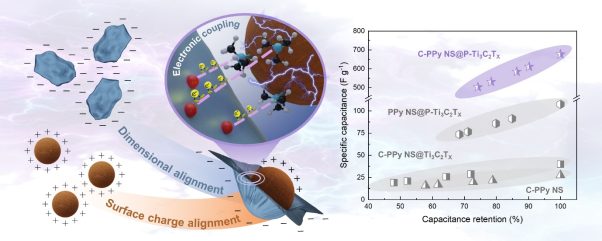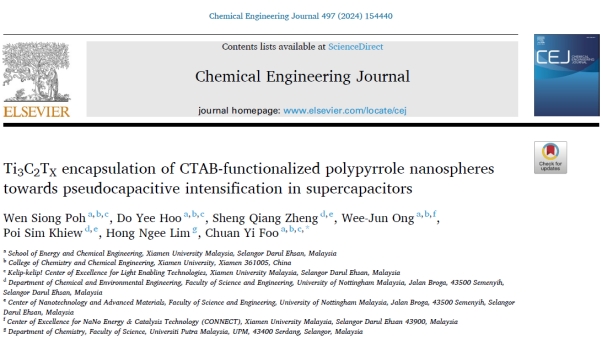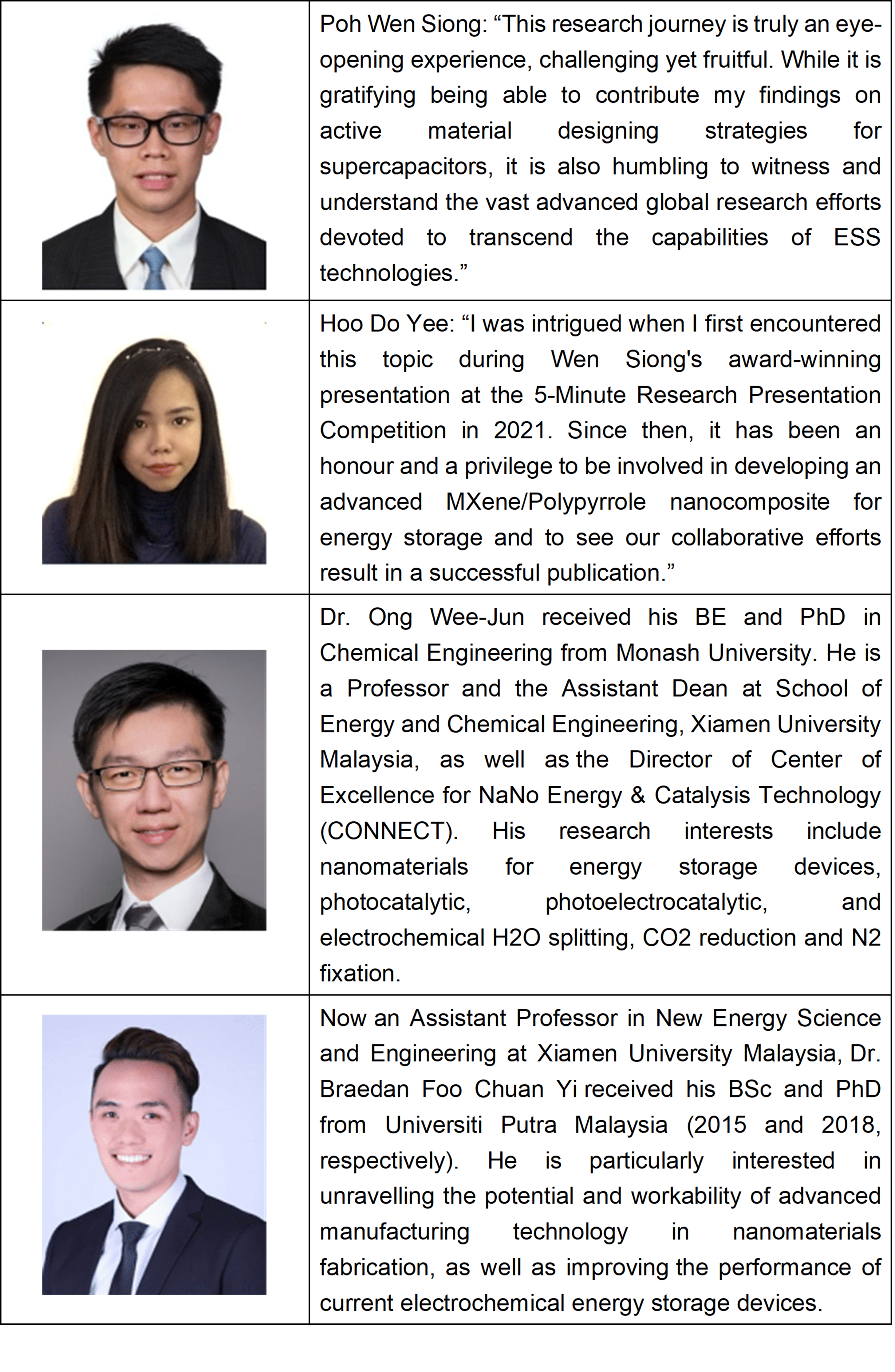School of Energy and Chemical Engineering Develops High-Performance Nanocomposite Active Material for Supercapacitors
In the realm of new energy, while energy harvesting technologies like solar, wind, hydro, and triboelectricity play crucial roles in addressing the global energy crisis, energy storage systems (ESSs) are equally important in preserving and efficiently distributing harvested energy to minimize wastage. Supercapacitors, with their simple production process, low safety risks, and excellent longevity, are promising ESSs, especially in line with the trend of portable electronic devices.
Recently, a group of researchers from Xiamen University Malaysia (XMUM) explored the potential of methodical active material design to develop a supercapacitor with enhanced specific capacitance (energy storage capacity) without compromising rate performance (energy release speed). The team includes Master’s students Poh Wen Siong (New Energy Science and Engineering) and Hoo Do Yee (Chemical Engineering), alongside Dr. Braedan Foo Chuan Yi and Prof. Ong Wee Jun from the School of Energy and Chemical Engineering.
Their work, titled “Ti3C2TX Encapsulation of CTAB-Functionalized Polypyrrole Nanospheres Towards Pseudocapacitive Intensification in Supercapacitors,” was published in the Chemical Engineering Journal, a Q1 SCI journal with an impact factor of 13.3.
A decade-long dilemma in supercapacitor technologies is the trade-off between specific capacitance and rate performance. In this work, the team delved into the synthesis design of a nanocomposite that integrates nanomaterials of polypyrrole nanospheres (PPy NS) and MXene (Ti3C2TX) nanoflakes. By combining surface charge and dimensional alignment techniques, the nanocomposite attained remarkable specific capacitance and rate performance. This was made possible via precise enwrapping of PPy NS by highly conductive Ti3C2TX nanoflakes and an electronic coupling mechanism induced by surface functionalization of PPy NS.
This research is supported by the Fundamental Research Grant Scheme by Ministry of Higher Education Malaysia (FRGS/1/2021/STG04/XMU/02/1 and FRGS/1/2022/TK09/XMU/03/2), and the Xiamen University Malaysia Research Fund (XMUMRF/2023-C11/ IENG/0056).

Synthesis design of PPy/Ti3C2TX nanocomposite combines strategies of dimensional and surface charge alignment to facilitate individual encapsulation PPy NS by Ti3C2TX nanoflakes and realize electronic coupling, yielding synergistic augmentation in specific capacitance and rate performance.

The article can be accessed at https://doi.org/10.1016/j.cej.2024.154440

